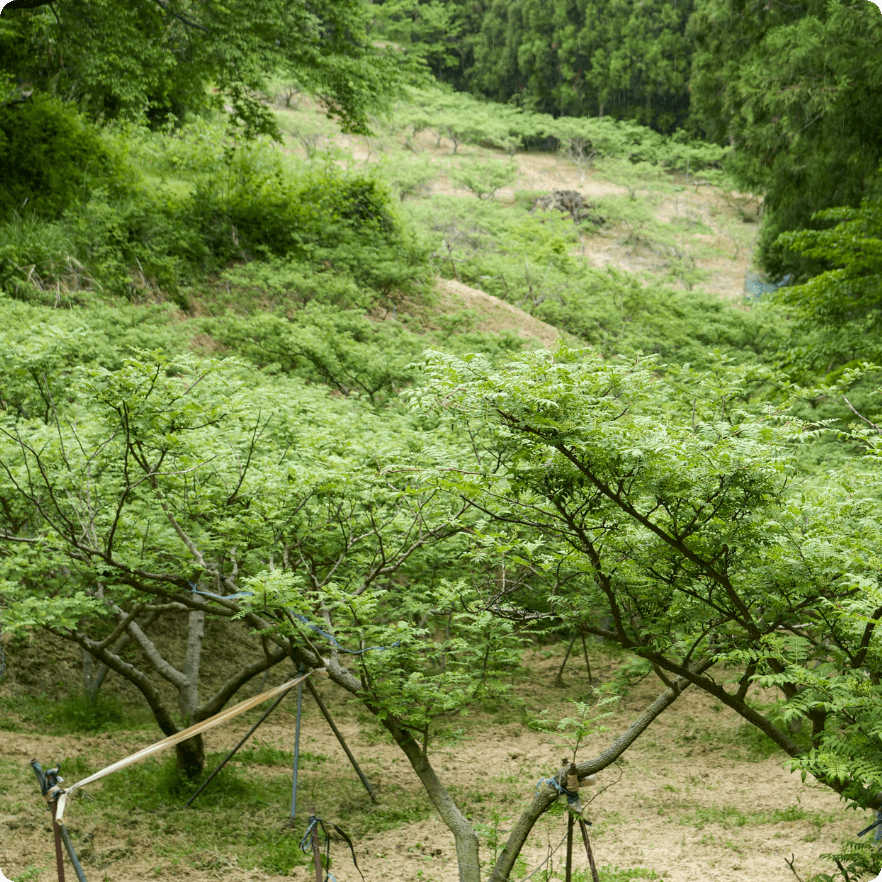Wakayama Prefecture accounts for more than sixty percent of the volume of sansho production in Japan, and is the stand out number one production region of the nation, well ahead of those in second place and below. In Aridagawa Town specifically, the region of Shimizu (formerly Shimizu Town) once accounted for eighty percent of the total production of sansho in Japan, and is a prosperous sansho production area.
In old times, in the middle of the Heian period (794—1185) sansho was paid as a tribute, “Kii Province three sho (units) of shinsho” (Kii Province is present day Wakayama Prefecture, shinsho refers to sansho) was stated in the Engishiki (compendium of codes, procedures and laws) (statutes). Also, during the Shoka era (1257—1259), sansho was recorded as produce in the Koyasan monjo, so the region has a history of sansho cultivation of 800 to 1,000 years.
Volume and share of sansho yield by prefecture.


Main sansho production region in Wakayama prefecture

In the Tenpo era (1831—1845) at the end stage of the Edo period, Kane’mon Ioki discovered sansho with large berries in clusters resembling bunches of grapes in the garden at his house in Toi Village (currently Toi, Aridagawa Town), and since it had a strong fragrance and a hot zesty flavor, the variety was cultivated from then onward, and has become firmly rooted in the region. This variety is specially produced budo sansho that is still grown today. Ioki can also be written in different characters, as Iyoki meaning “tree with medical applications,” and it is said that because budo sansho was adopted for medicinal purposes, these characters have been adopted for the name of the Kane’mon house.
The town of Aridagawa is mountainous in nature, and seventy-six percent of the area is covered with forest. Located on the temperate Kii Peninsula, the region of Shimizu is located at high altitude, so it also sees snowfalls in winter. These geographical features and climate are suitable for cultivating sansho, and so, by utilizing ridges between rice fields and sloping land, sansho cultivation has ensued. Further, demand for sansho as a condiment and base ingredient for medicines increased dramatically following the Asia-Pacific War, full-scale cultivation of sansho began in fields and the cultivation area also was increased.
 Sansho fields in the region of Shimizu
Sansho fields in the region of Shimizu

 What is budo sansho?
What is budo sansho?